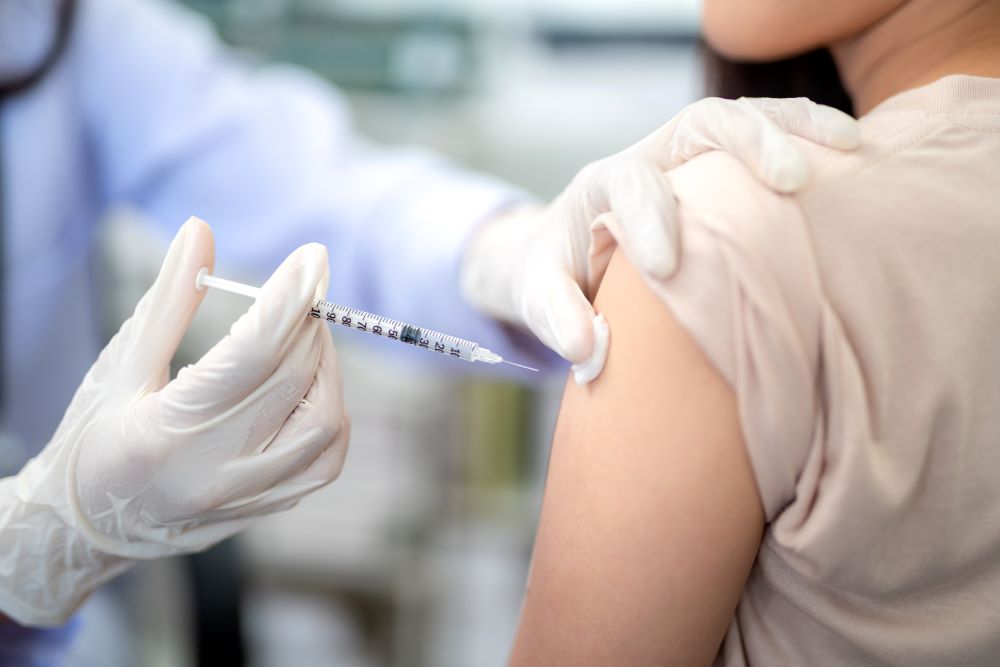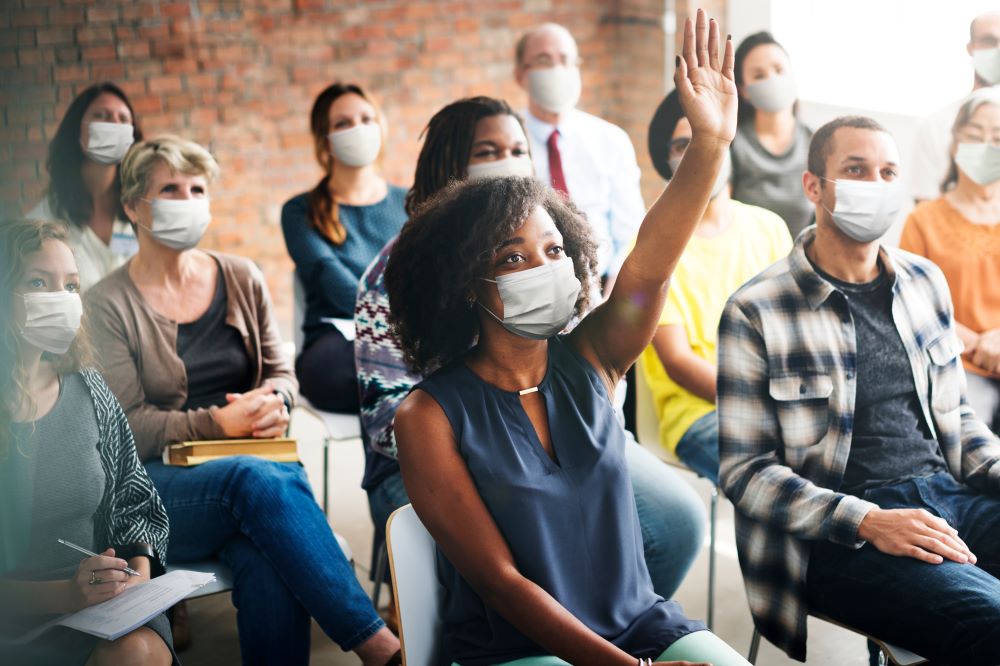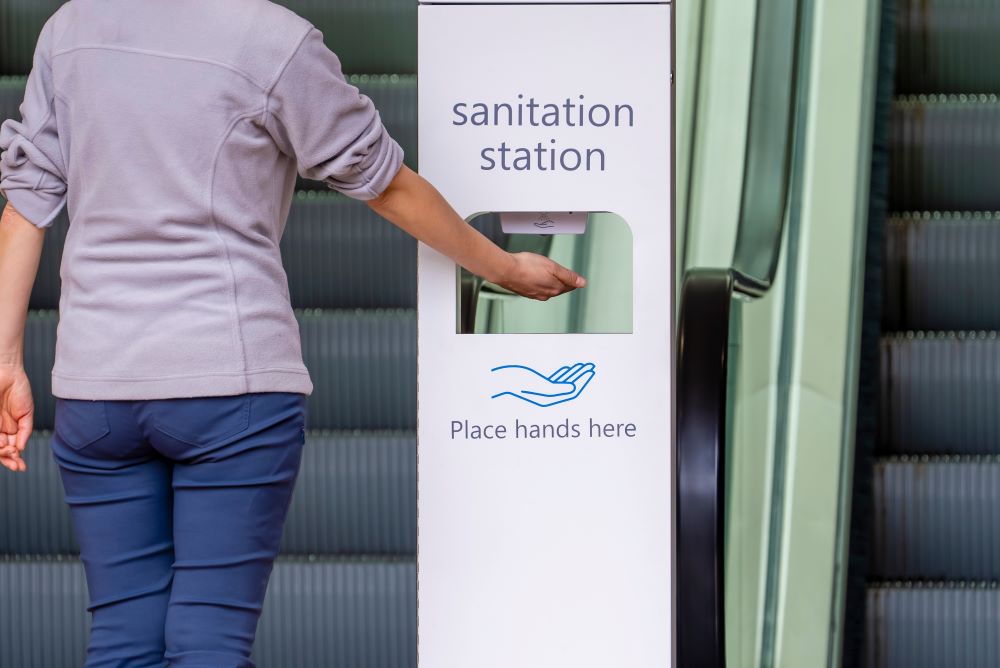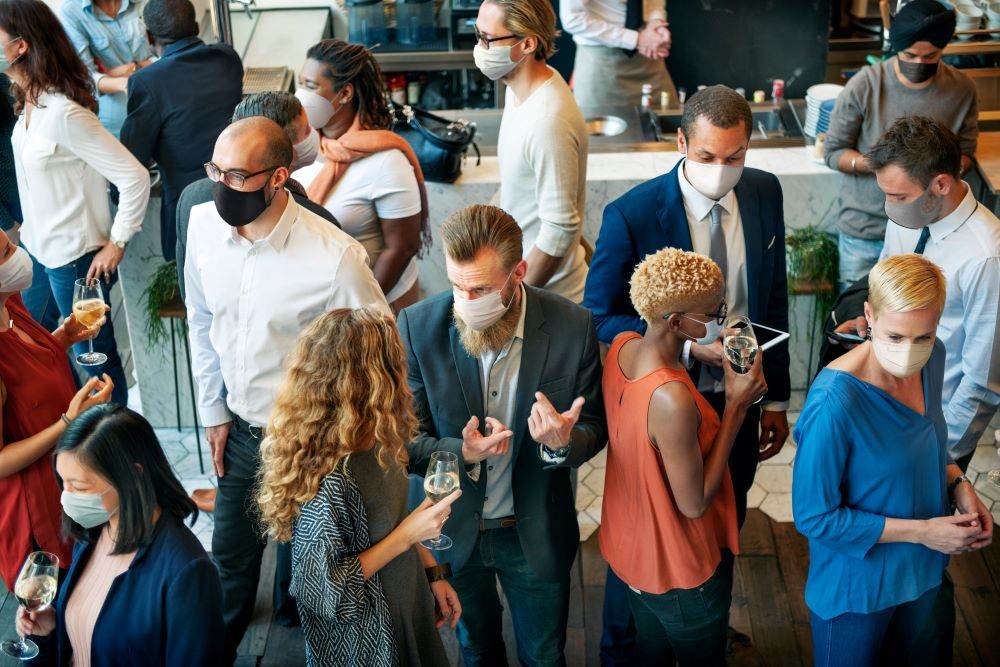Nearly four years after the beginning of the COVID-19 pandemic, the virus is continuing to make headlines. In 2022, the CDC updated its vaccine recommendations and encouraged all Americans aged six months and older to receive an updated COVID-19 booster vaccine to help combat rising cases of the omicron variant of the virus. And in 2023, the CDC recommended another booster to help protect against a subvariant of omicron.
As the world attempts to “move on” from COVID-19, here’s a look at where we stand today.
Vaccinations Down, But So Are Cases
In recent years, and despite CDC recommendations, many eligible Americans opted not to take the vaccine to protect against spreading variants. According to the CDC, only around 20% of adults 18 years and older were vaccinated with the updated 2023-2024 COVID-19 vaccine. This is in stark contrast to the nearly 80% of the population who have received at least one dose of the original COVID-19 vaccine.
There are many reasons why people may be hesitant to take a vaccine (efficacy concerns, fear of side effects, etc.), but the overall data suggests that many Americans are just completely apathetic about COVID-19 and don’t really see the need to get vaccinated against the virus’ variants.

And while there was certainly a “bump” in cases this past summer, the number of reported cases hasn’t reached the heights of previous COVID-19 surges. There has also been a slight uptick in hospitalizations during the past few months, but the number of those who need to be hospitalized or who die from Covid is still drastically lower than it was during the height of the pandemic. In fact, there were only 340 deaths reported during the first week of August this year compared to 26,000 weekly deaths in January 2021.
Not Out of the Woods, Yet
However, while the apathy that many young, healthy Americans feel toward the COVID-19 virus may be justified, there are still many that fear the virus. And for good reason, too. People with chronic illnesses or who are immunocompromised are the ones leading to the slight uptick in hospitalizations.
Additionally, there is still the risk of those immunocompromised people, or even people who have relatively healthy immune systems, of contracting Long Covid. Data from the CDC suggests that Long Covid disproportionately affects women and individuals between the ages of 40 and 59, which are some of the key demographics that make up the meetings and events industry.
Protecting Yourself and Attendees
So, what does this mean for meeting and event planners? About 3% of the population in the United States is considered immunocompromised, putting them at higher risk of developing complications if they contract COVID-19 or any of its variants. That’s 3% of your potential meeting attendees who might be at higher risk of Covid complications.
While the days of mass-masking and quarantines are almost certainly over, there are still measures that the CDC recommends people take in order to protect themselves and others as we head into fall.

Mitigating Attendee Risk
But beyond personally protecting yourself from the virus, what steps can you implement at your next meeting or event to help ensure that the risk of your attendees contracting COVID-19 is minimized? A lot of the CDC recommendations from the height of the pandemic still apply to the latest Covid variants.
These include:
- Encouraging attendees to stay home if they are sick.
- Providing opportunities for social distancing and holding events in larger spaces with improved air filtration systems.
- Providing hand sanitization stations throughout the venue.
- Encouraging attendees to wear masks or other face coverings.
- Avoiding “family-style” buffets or other communal F&B services.
Of course, many planners want to provide the safest environment possible for their attendees, but many do not have the time, money or circumstances to be able to provide some of these protections.
[Related: How to Stay Healthy During Cold and Flu Season Business Travel]

An Expert Weighs In
Taking all these precautions is the prudent path, but do most people still care?
Pat Schaumann is the president of Schaumann Consulting Group, an organization that specializes in Healthcare Meeting Compliance Certificates. Schaumann herself is a meetings industry veteran and saw how planners reacted to Covid at the beginning.
“We’re used to Covid in the meeting business,” Schaumann said. “This is something that we dealt with dramatically back in 2021.”
But now Schaumann says she hardly ever sees events provide personal protective equipment or information about COVID-19 and estimates only approximately 10% of meeting attendees choose to wear a mask during an event.
“In the past year, I’ve not seen any protocols at any meetings I’ve gone to or spoken at,” Schaumann said. “At conferences big and small, I’ve not seen any precautions for Covid. I see people wearing masks, but that’s their decision.”
Expectations vs. Reality
A lot of meeting planners probably know what the CDC guidelines around COVID-19 are, but what’s more interesting is why many planners are not choosing to provide any Covid protections or information at their events.
One explanation is that many planners remember what it was like when COVID-19 rocked the industry for nearly a year and a half, with many organizations still reeling from the effects of the shutdown of nearly all in-person gatherings. Schaumann said that many planners might just be feeling burnt out and don’t want to have any reminders of what life was like for them and their attendees during the pandemic.
[Related: 10 Tips to Make In-Person Meetings Safe Amidst COVID-19 Variants]
“They’re tired. They don’t want to do it again,” Schaumann said. “But I think companies need to be aware that their No. 1 job as a meeting planner is to protect your attendees, and if you’re seeing these cases coming in these surges, maybe they need to go back to what they were doing.”
Schaumann suggests that groups should at least be providing these protections and information about Covid, something that many groups and events are failing to do. Providing masks at check-in and placing hand sanitizer stations around the event floor is just one small thing that planners can do to help reduce the transmission of Covid around their event.

This doesn’t necessarily mean making mask-wearing or hand sanitization compulsory at events, but providing attendees the option to protect themselves against the virus might be the best course of action for many planners. After all, some kind of protection against Covid is better than no protection at all.
Planners can also provide attendees with information about COVID-19 and the new variants prior to the event so attendees can evaluate their personal level of risk prior to attending.
“Maybe it’s a wakeup call,” Schaumann said. “I can tell you it’s not going away.”
A Hybrid Approach
Another option planners should consider is incorporating hybrid elements into their events, offering virtual attendees the opportunity to still engage with an event without having to attend in person. Offering livestreams of important event activities or education sessions and providing opportunities for virtual attendees to connect with in-person attendees can open your event beyond your host venue and incorporate a wider range of attendees who may be hesitant to meet face to face.
While many people might think of hybrid meetings as a bygone, Covid-era relic, given the new summer spikes in Covid cases heading into a busy travel season, hybrid meetings might be the perfect strategy to incorporate into your next meeting or event.
Read this next: 4 Benefits of Incorporating Hybrid Elements in Your Meetings







